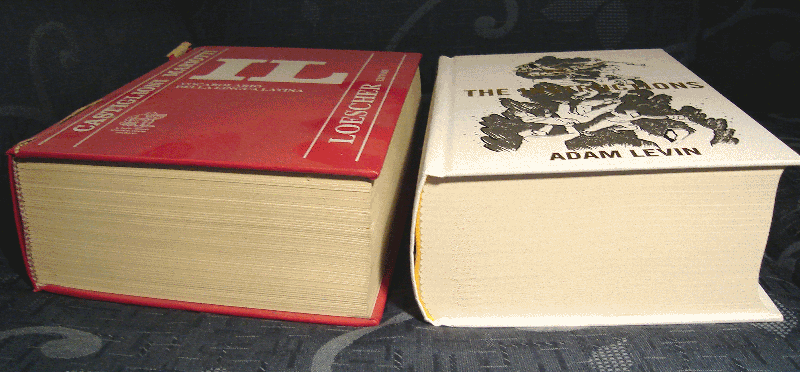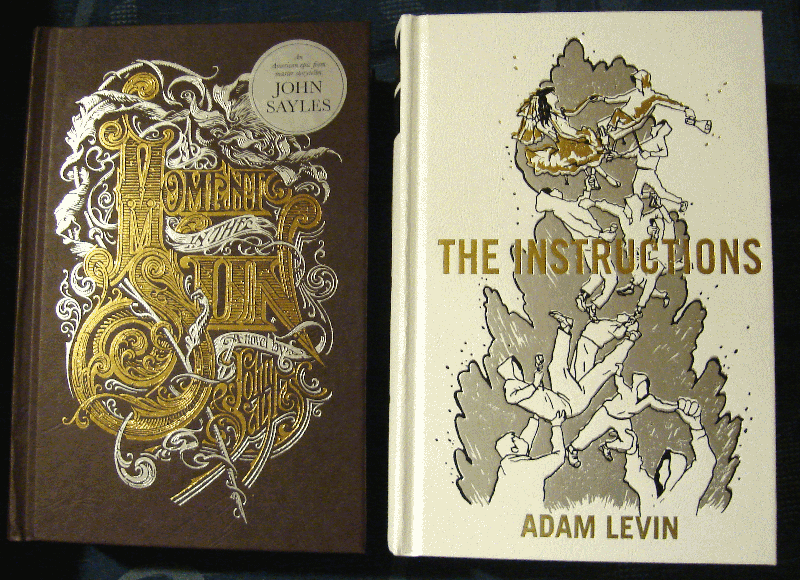
Here I serve some book porn. I finally received these two books today, two of the sexiest I ever purchased. The book, as an object, can have its charm too.
Two books coming from the same publisher (McSweeney’s) and relatively recent. THE INSTRUCTIONS by Adam Levin was November 2010, A Moment in the Sun by John Sayles was a month ago. Both are HUGE tomes, THE INSTRUCTION is slightly bigger at 1030 pages, and A Moment in the Sun is 960. Same number of lines on the page (38) but A Moment in the Sun has a very slightly smaller font.
Both books thankfully arrived in very good condition, though THE INSTRUCTION comes in fives different colors (or more) and I got this white copy that isn’t exactly my favorite pick.
It should be obvious that I have a peculiar love for books with a staggering number of pages and written tiny, and there are a number of motivations. The first is simple fascination that I got since I was a kid. Both Lord of the Rings and The Neverending Story in its own way gave me this fascination for something you could lose yourself in forever. Something that was never over and that kept charming you. The prototypical idea of “THE” Book, the definitive one, the one that could tell you everything that is worth knowing. Then there’s a fact that these huge books are achievements. A kind of monument to human intellect and culture. Like climbing the Everest, and reading it you get to share something of the achievement itself. A relevant accomplishment. Other books you can read and forget, but these huge books can haunt you, challenge you from their shelf, and be part of a significant chunk of your life.
Then there’s the fact that the number of books out there to read is truly infinite. So if I read something then I want that the writer gave to the book EVERYTHING HE HAD. Writing a book, or a series, has to be something necessary and ultimate. And huge books demand more from the reader as from the writer. They can’t be done on the sideline, they pretend a singular commitment (and need to provide equivalent reward).
Obviously the hugeness of a tome draws my attention, but I’m not buying and reading a book just because it’s huge, as I don’t do that just because I like a cover. The point is: I bought these two books here because I made some research before, and I expect these to be masterpieces. Nothing less. So, regardless of them being sexy or being long, you should be interesting because they are good stuff.
It may be interesting how I found them. I simply got to this blog post. A list of 10 doorstoppers, and a list of books that I at least know rather well if not read back to back. An outstanding list, actually. The last one, though, I had never heard. Not even a slight mention.
So I go and start doing my research. I found another blog, The Year of Difficult Reading, that is rather interesting in its own right and that got another picture of challenging (and significant) books. Or another that made fun at the hugeness of THE INSTRUCTIONS.
Along that I also read a number of glowing reviews and lots of comparisons with DFW’s Infinite Jest, my favorite book by far. So I got more and more interested and figured this wasn’t just a book that deserved attention, but something potentially great and memorable. Especially, I read that it’s not one of those long, slow and difficult books that have no point and are impossible to read and understand. It’s instead playful and lively, fun to read and keeping you turning the pages. Something readable in spite of its length and ambitious literary collocation.
I still only read a few pages but I definitely confirm all that. It plays a lot with language and reminds me closely of DFW. It actually gives me more nostalgia than anything. Makes you really miss Infinite Jest and feels like it’s only a desolate imitation. It has something of DFW style, but not the spark of pure genius. Yet, despite this “wannabe” intention it also seem to have its own qualities. The idea I get is that the writer is constantly one step ahead of the reader and second-guessing everything. The attention is very much on the reader instead of some obscure and unreachable literary intention. He anticipates your reactions and keeps this sense of self-awareness. It manages, at the same time, to be serious while not taking itself seriously at all. So it’s not a book arrogant and pompous, but one that plays self-consciously with itself and the reader. A lively, fun dialogue in its own right, and never going too far only to fail clumsily.
After I put the order for THE INSTRUCTIONS I also checked the book’s publisher and noticed another book of them. John Sayles is one of my favorite directors (and if you haven’t already, go see all his movies since they are all masterpieces). I saw most of his movies at an independent festival a few years ago and even saw him in person. Now this is an historical fiction which is not something that would make me purchase the book without knowing more, but I know what kind of stuff I can expect from John Sayles and so what I needed was confirmation that he was as good writer as he was as director. Not many reviews out there yet, since the book is recent, but all the comments I found were packed with praises, hinting that this book may be something memorable regardless of Sayle’s career.
Today I read an interview with John Sayles that again reinforced all my hopes for this book.
Now Sayles has unveiled his most ambitious project to date in any genre, A Moment In the Sun, a bloody, brilliant, nearly 1,000 page globetrotting epic set at the turn of the last century, a time not so different from our own, it turns out.
Had to keep quoting lines on Twitter because it was full of awesomeness. This is what I liked:
The Rumpus: Your new novel, A Moment in the Sun, is written in—I wouldn’t say English, exactly, because you’ve taken and twisted the language to make it your own. It reads like a tornado of voices.
John Sayles: Every character has their own language, voices and styles. There’s a chapter from the point of view of a correspondent, and it’s written like the correspondence of that time. I read a bunch of those guys, Richard Harding Davis, and picked up on their locutions, which aren’t locutions we use anymore.
Rumpus: You were channeling them?
Sayles: You get into it and pretty soon—when actors play a character on a TV show for a long time, they’ll just get the script back to the new writers and say, My guy does not talk like that, because they’ve internalized it. They know the vocabulary and the rhythm of that character, and that’s how I start writing with this—it’s a dialogue, how the character expresses themselves, so I can find out who they are.
[…]
It expanded, and I just felt while I was writing it that the book had gotten to a size—this happens with things when they get to be the size of Moby-Dick—where it’s not a tight little story anymore, and it’s never going to be a tight little story. This is a book you can walk around in.
Rumpus: So it’s about giving voice to the voiceless—
Sayles: Or just telling the story in a complex and mosaic kind of way and feeling like wait a minute, here’s a whole part of the story that’s not represented and I just at least want one window into it, just one little peak.
Rumpus: And that’s the importance of storytelling, finally, you mean? Whether it’s movies or books, that’s why we tell stories?
Sayles: The minute this turns into a novel and not a screenplay, a couple things happen. One, you can have many more points of view. This book would not make a movie, it’d make a fifty-part mini-series, maybe. But in the process you don’t have that time to structure peoples’ experience. It’s very important in a movie what follows what. This needs to happen and then this happens next. A good action movie is like a rollercoaster ride, whereas a novel like this a long journey down a river. There are some slow parts and some rapids and—oh, shit, here comes a waterfall.
The other thing that happens is that I could do anything in fiction I feel like if I do it well, if I make people think things, wonder about things, feel things. In a movie, you lose that interior monologue.
There’s a couple of reasons people tell stories. Traditional oral storytelling—and I got into this in The Secret of Roan Inish—is about passed on from generation to generation. Sometimes they’re cautionary tales, other times they’re about who we are. We tell the story over and over. I was raised Catholic. There are gospels and these are allegorical stories that tell you about your religion or what we as Catholics believe is our central story or our central being. Native Americans have these stories, the Irish have a lot of these stories. Here’s someone else’s story. Here’s somebody you will never meet—oh, how exotic. Here’s a bunch of stories about a bunch of guys who go and chase whales. And you know what’s amazing? As great an adventure the story is, there’s also some pretty heavy human stuff that you could apply to human beings in general when they get into a dark place. So then what fiction becomes is a way to understand the world and a way to understand other people, and maybe yourself but other people too, and in the end a lot of what I try to do in books and movies is take you into other people’s lives so you can get a sense of how they see the world.
McSweeney’s also put a “bonus” page with lots of pictures and notes that John Sayles used as documentation. It’s awesome stuff. (and nice pictures here as well)
These two books aren’t just two huge and competently published books that look so great on a shelf. But also something special and that would be precious even without awesome covers & packaging & pagecount. Quality stuff, the best around I’m aware of. Apexes of achievement in their own genre. Invaluable experiences.
And they are CHEAP. Amazon.com is selling both of them for half their price. So go and enjoy the privilege while you can:
– THE INSTRUCTIONS
– A moment in the Sun
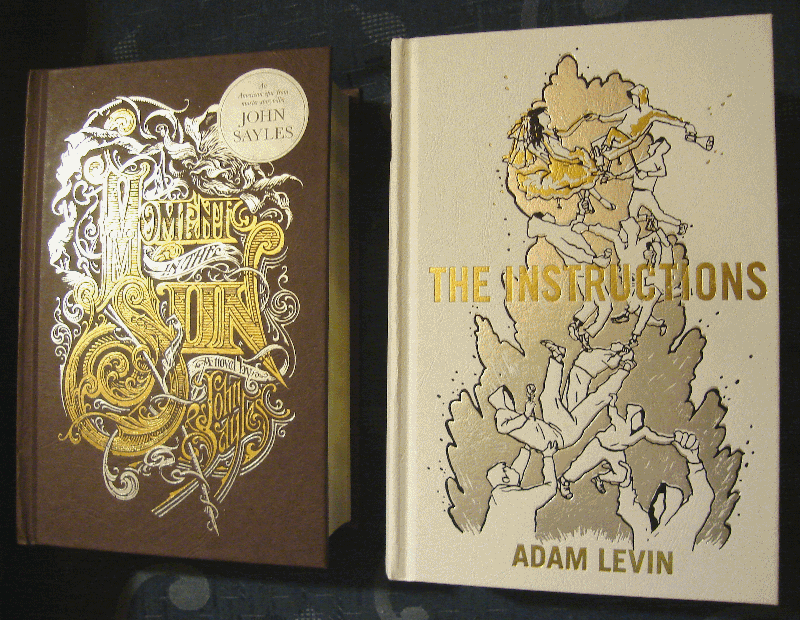
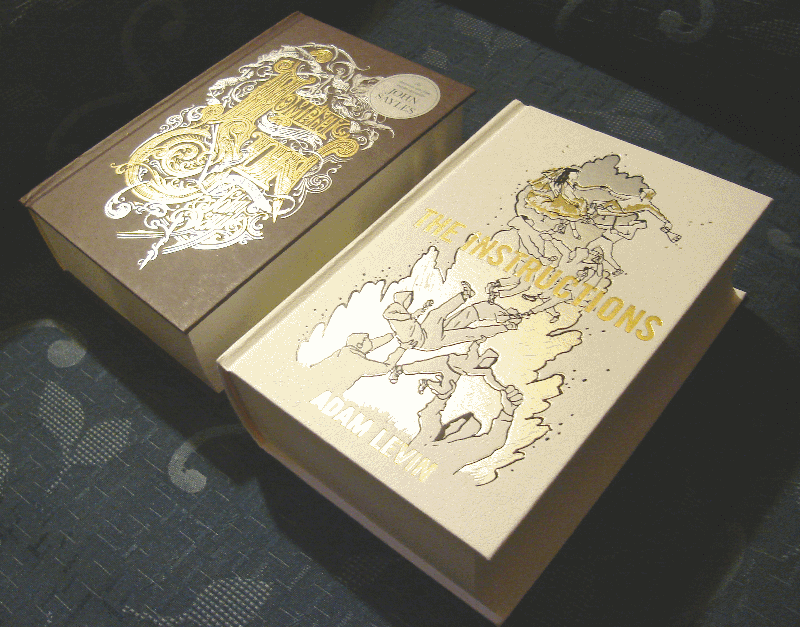
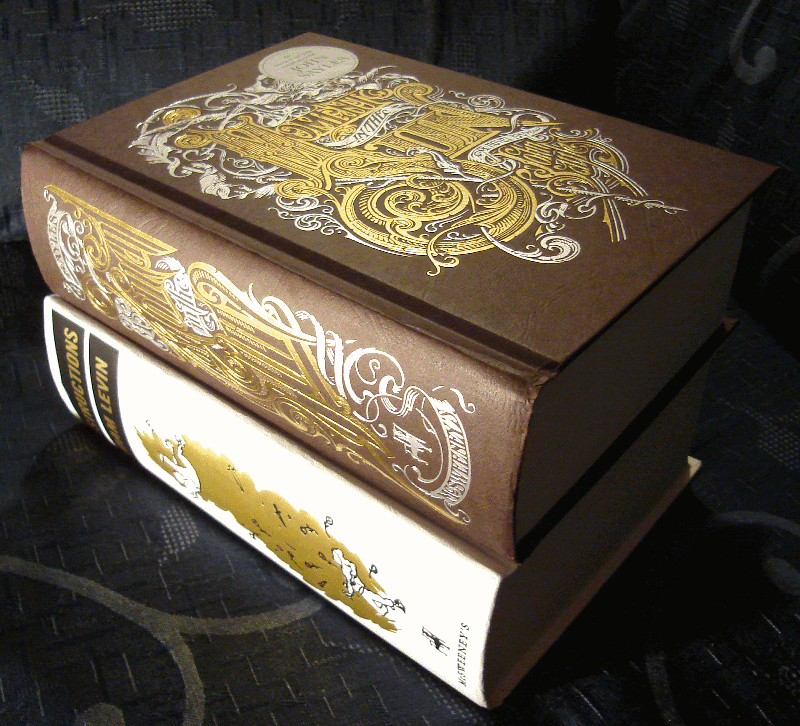
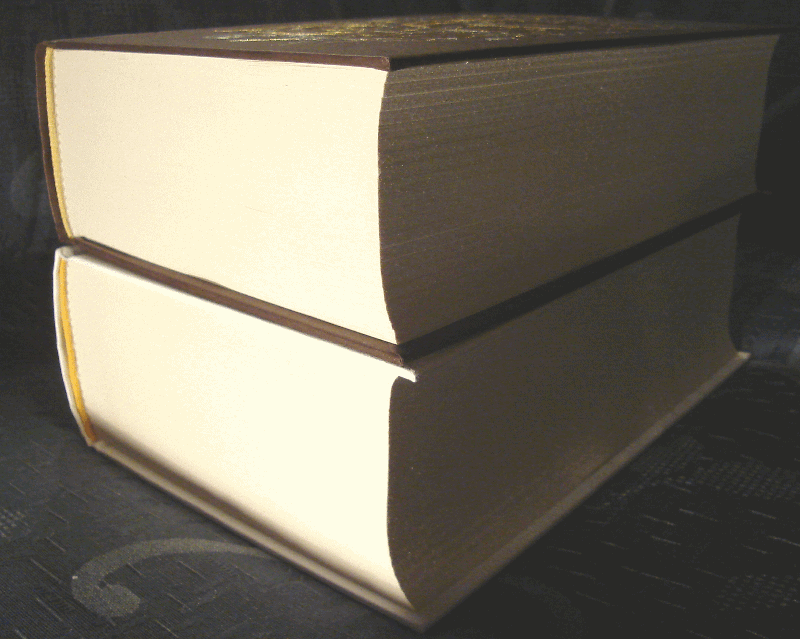
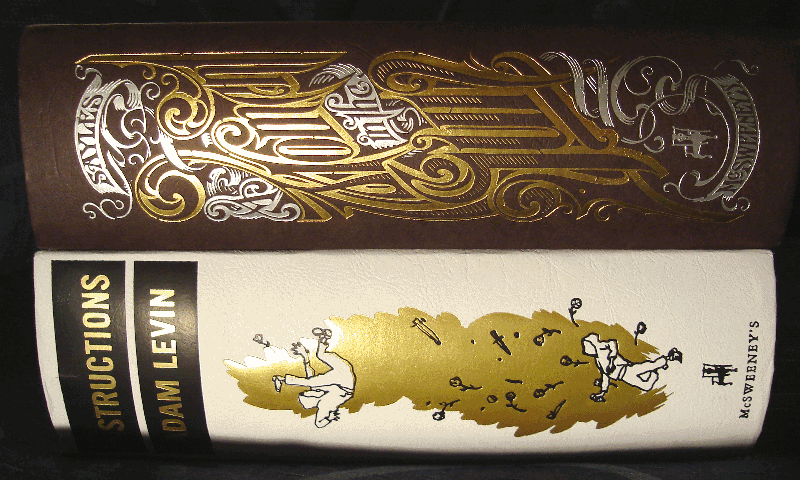
THE INSTRUCTIONS Vs Infinite Jest:
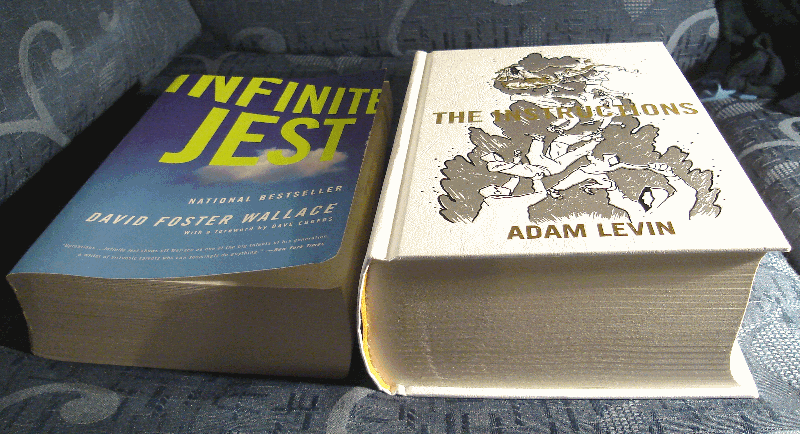
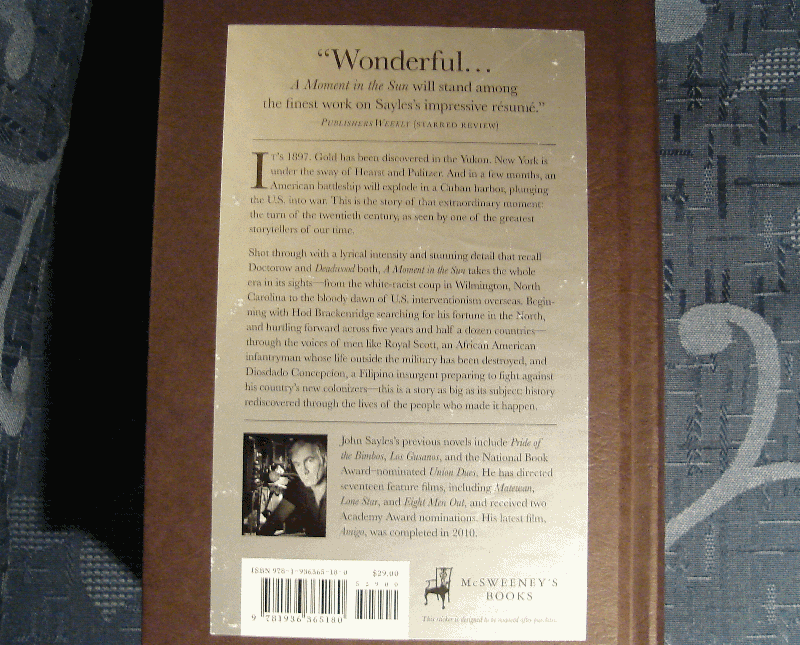
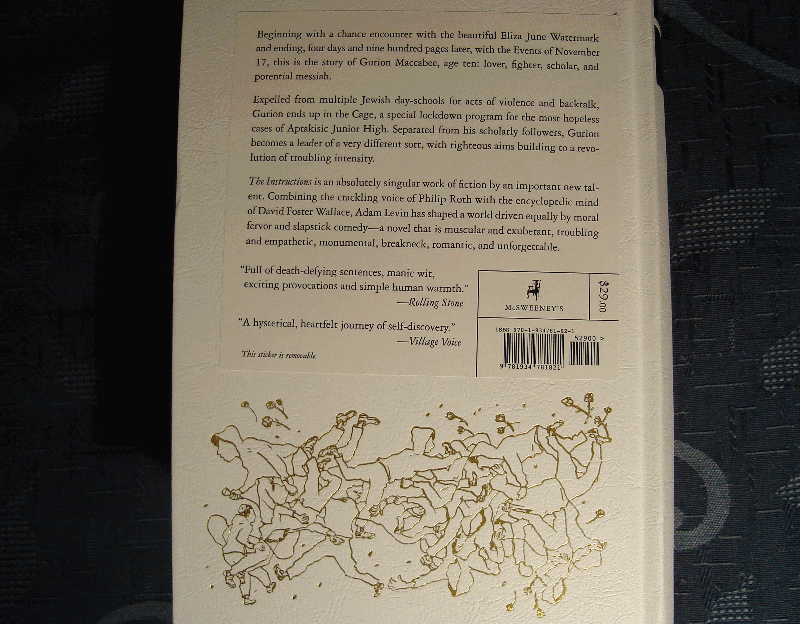
A random page from A Moment in the Sun:
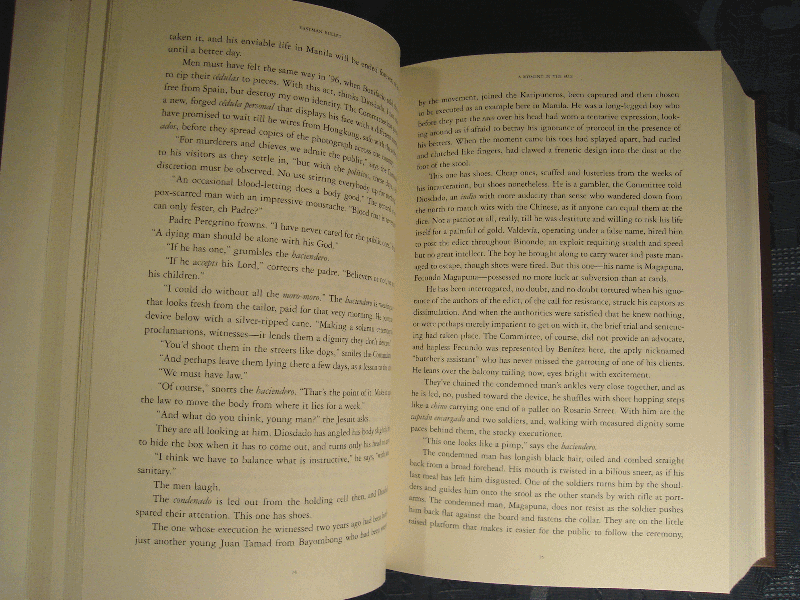
A page from THE INSTRUCTIONS, it plays a bit with the structure and presentation as you can see:
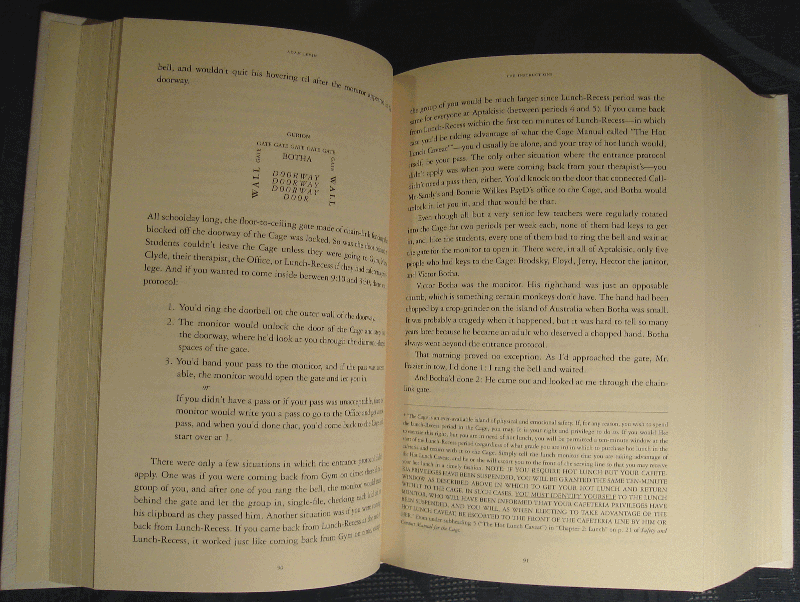
Sometimes there are also these maps made of words:
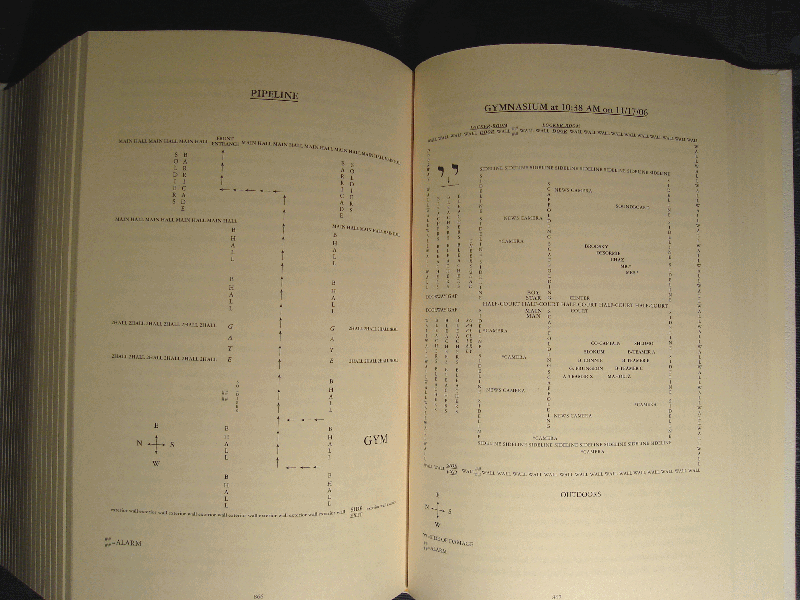
And other playful things in the same style:
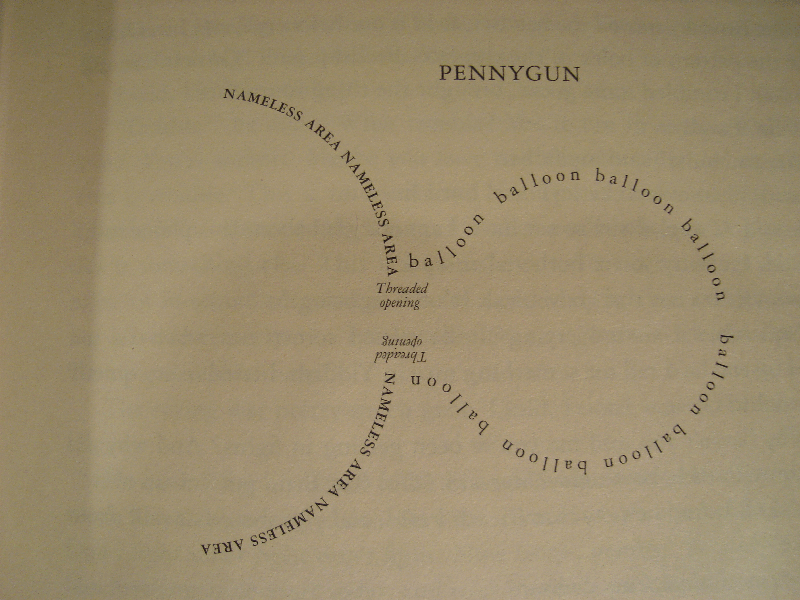
This is the “prayer” at the beginning of the book:
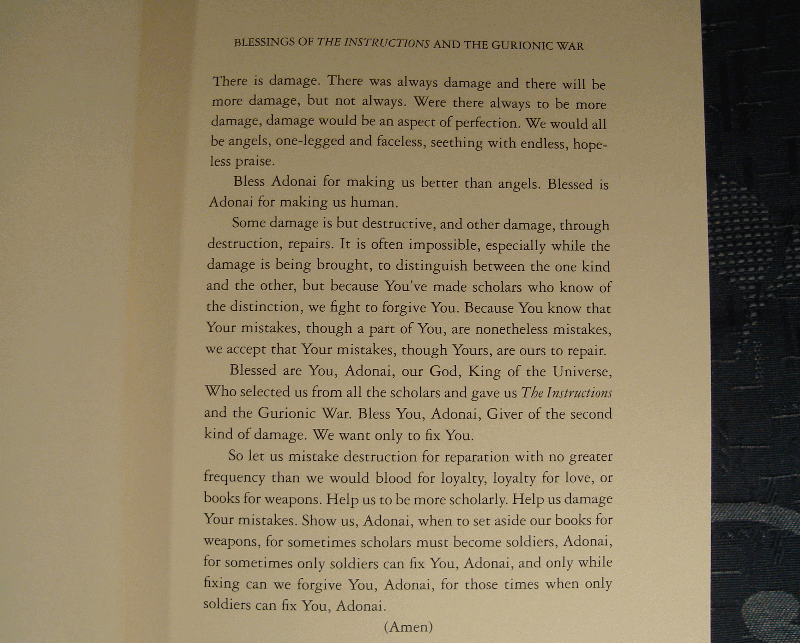
THE INSTRUCTIONS Vs old Latin vocabulary:
